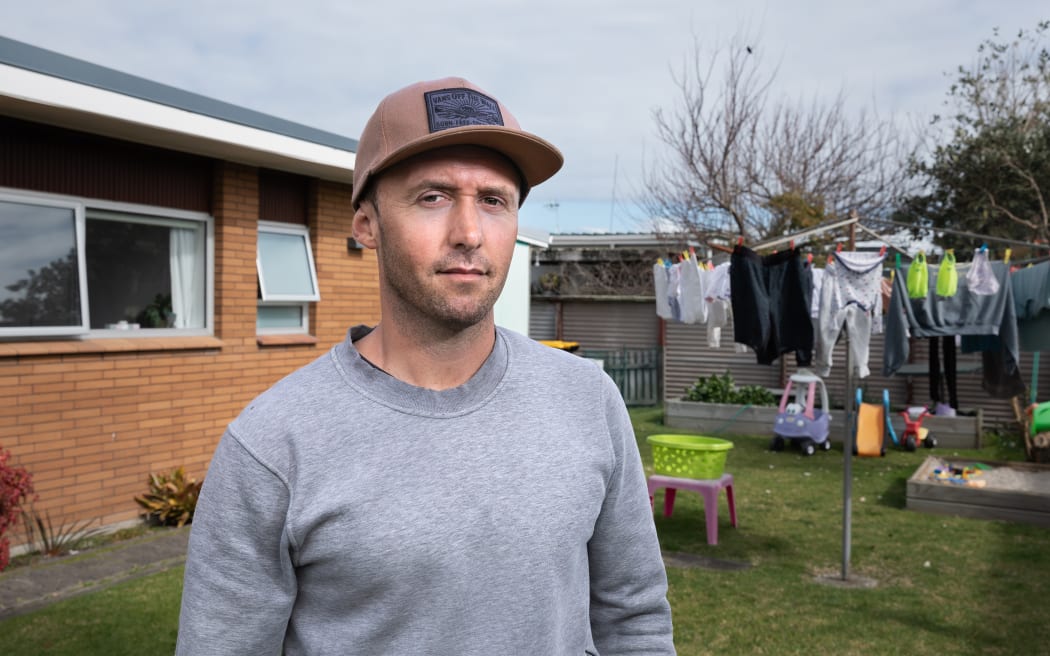People are dying while pollution continues belching into the air in one of New Zealand’s most beautiful beachside suburbs. What will it take to stop it?
On a clear winter’s morning in August, Sven Hodkinson opens the door of his Mt Maunganui home and, for a brief moment, he is hopeful today will be a clean air day.
But then, an acrid stench fills his nostrils and he quickly shuts the door.
“Darling, it smells again,” Hodkinson calls to his wife Ivana, who is feeding their nine-month-old baby in the kitchen.
“Oh my god,” she says. “Again?”
Ideally, on days like this, the family would stay inside, with the windows closed. But it’s a Thursday, and the couple’s three-year-old daughter Grace needs to go to daycare. As Hodkinson rides with her on his bike, past the local primary school, then past the high school, he smells more of the bitter chemical odour. Above him, a pair of dark plumes darken the blue sky, smoke pouring from the stacks of two nearby asphalt plants. The closest, run by Allied Asphalt, is just 400m from Grace’s preschool.
“It’s like someone has just laid a brand new road outside your house, but the smell lingers for days,” Hodkinson says. “The worst time is in the morning, which is obviously right when we leave the house.”
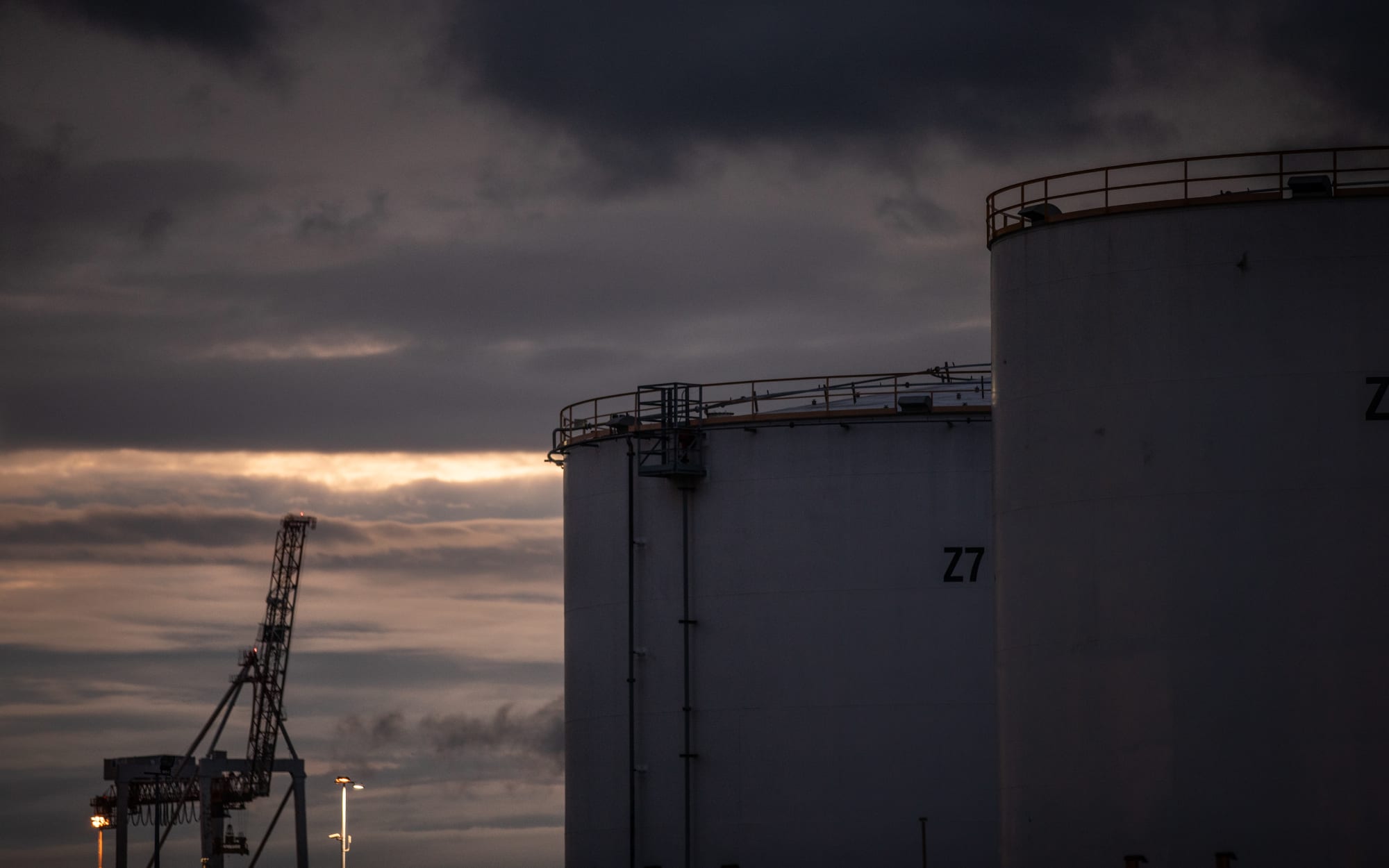
An industrial area at Mt Maunganui covers 450 hectares Photo: RNZ / Cole Eastham-Farrelly
Hodkinson and his family live next to one of New Zealand’s worst sites for air pollution: the Mt Maunganui industrial area. Sprawling across 450 hectares of land around the Tauranga Harbour, the industrial zone is home to the country’s largest port and 800 businesses. More than 40 of those are known to harm the environment, including the port itself. The air pollution comes not just from three bitumen factories - the ones Hodkinson can smell from his house - but from multiple other companies that use a raft of chemicals to make everything from fertiliser to resin; from the dust created at the port from handling stock feed and logs; and from the import and treatment of fuel, cement and coal.
Each time the wind blows from the south-west - which is often, given it’s the prevailing wind - that noxious mix from the industrial zone wafts over homes in the Mount. The dust doesn’t discriminate. It doesn’t care that this is some of the most expensive real estate in the country or that children live and play here. It settles on kindergartens, schools, and sports fields, leaving a thick, black residue that seeps into garages, piles up on windowsills and clings to any material it can find.
What concerns Hodkinson the most, however, is not the chemicals he can smell or the dust he can see, but the pollution that he can’t.
The most toxic chemicals from the industrial area are what’s known as “particulate matter”, a dust so fine it’s invisible, but which can make its way into the respiratory tract to cause breathing and health problems. Those worst affected are children and the elderly, and those suffering coughs or asthma. Particulate matter can also cause heart disease and lung cancer, particularly after chronic exposure. In fact, the risk from these tiny particles is so high that the World Health Organisation (WHO) lists it alongside smoking, high cholesterol and obesity on its list of harmful issues.
“It’s pretty clear cut that the air quality here is absolutely terrible,” Hodkinson says. “We know that now, everyone knows it. But I don’t feel like anything is happening.”
Life in a polluted airshed
Concerns about air pollution in Mt Maunganui first arose in 2015, when a local marae, Whareroa, began to complain about the impacts of sulphur on the whanau who live on its land within the industrial zone. Next came complaints about dust causing problems for airport workers living on nearby Aerodrome Road. In response, in 2018, the council committed to spending $500,000 a year to monitor the air in the area. By 2019, the entire industrial zone was declared a polluted “airshed”, after the monitoring found pollution levels regularly breached the National Environmental Standards for Air Quality, which set a guaranteed minimum level of health protection.
Since then, the number of chemical spikes has fallen, from nearly 20 breaches a year down to two or three, but the levels of chronic background pollution persist. Concerned about the ongoing health risk, the Bay of Plenty’s public health office, Toi Te Ora, commissioned a report on the impacts of long-term exposure from the Institute of Environmental Science and Research (ESR).
The report, released this July, compared the air quality between the Mt Maunganui residential area, and another suburb 5km from the port called Otumoetai. It found that particulate matter from heavy industry was causing at least 13 additional premature deaths in the Mount each year.
“What that report gives us is a sense of the scale - that’s almost 10 percent of the total number of deaths in that area,” Toi Te Ora’s Medical Officer for Public Health Jim Miller says. “That health risk assessment shows that more needs to be done to improve the health and wellbeing of Mount Maunganui residents.”

Photo: RNZ
The report also found that levels of sulphur dioxide were elevated near the fertiliser works, and that Whareroa Marae, which is adjacent to the factory, was “adversely affected.” Levels of hydrogen sulphide also regularly exceeded national guidelines at the marae. Worse, the scientists suspected there would be harmful effects from a chemical called benzene, a known carcinogen, from a bulk storage site and an oil re-refining facility, but found the Bay of Plenty Regional Council was not collecting enough data for it to make a proper assessment of the risks.
And while the monitoring indicated that air quality had improved in some locations in the last three years, levels of particulate matter were still far too high, Miller says.
When the report was released, Miller presented it at a meeting of the Air Quality Working Party, the body set up between council, iwi, business and the community to address concerns about air quality. It was also put before the regional council and the Tauranga City Council. The response has been minimal at best, the advocates say.
“Since then, there’s been nothing,” says Whareroa Marae environment spokesperson Joel Ngātuere. “They haven't called one meeting with us to say, hey, we can see now, it’s black and white in front of us that there’s serious concerns for your community.”
Tranquility replaced by industry
By now, the lack of action doesn’t come as a surprise to Ngātuere, but it still upsets him.
For the past eight years, Whareroa has been the loudest voice in the fight against Mt Maunganui air pollution, generating countless media stories and even taking a case to a United Nations panel on the rights of indigenous people.
The marae sits on a traditional pa site just across the harbour from the Tauranga CBD. Its wharenui was built in 1873, meaning it predates both the industrial area and the port, which were established in the 1940s on land stolen from the Whareroa hapu, Ngāi Tukairangi and Ngāti Kuku.
Once a tranquil place, the marae is now surrounded by industry and noise. Planes from the neighbouring airport fly overhead at ten-minute intervals. Trucks roar up and down its narrow road, adding to the whine of traffic from the nearby harbour bridge. Its skyline is dominated by the dark walls of the Ballance Agri-Nutrients fertiliser factory on one side, with shipping containers stacked six-high looming over the small collection of houses on the other. About 100 people live at the site, mainly in kaumatua housing for retirees. It also hosts a kohanga reo and the offices for the local runanga, Ngai te Rangi.
“Here at Whareroa we have that particulate matter in the air, every hour, every minute, every second of the day,” Ngātuere says. The pollution impacts almost all aspects of their daily lives - the smell, the noise. It has even interrupted holidays, when a toxic odour settled over the whanau Christmas dinner, forcing everyone inside. Children get sick, and Ngātuere says they’ve recently buried three elders who died with respiratory issues.
“As a parent, as a member of the community… having to live every day knowing that, you know, your kids are being exposed to it, your grandparents, your family being exposed to it… it plays on you. But the councils, the government industries don't want to talk about it, they don’t want to acknowledge it.”
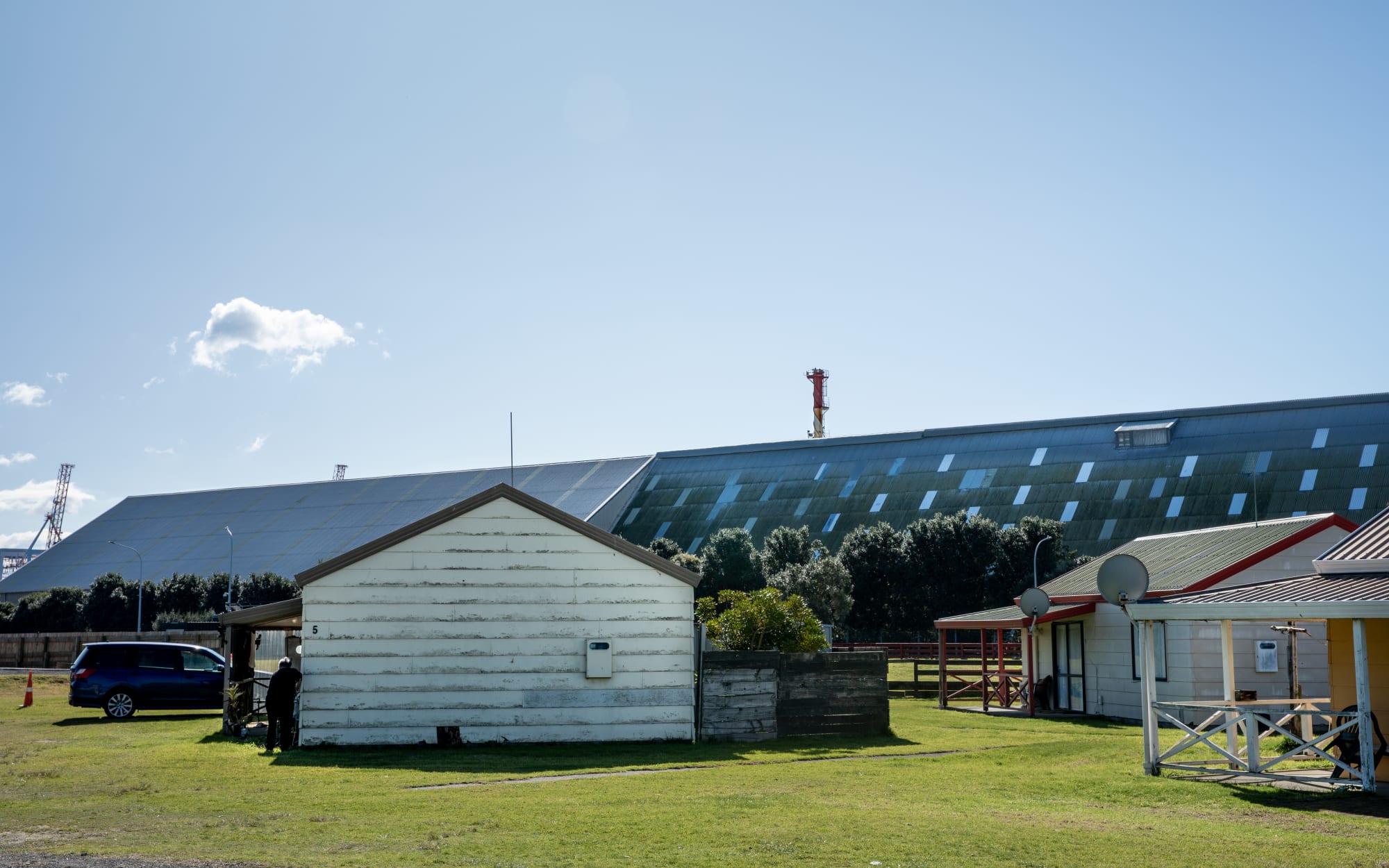
The residences at Whareroa Marae Photo: RNZ / Cole Eastham-Farrelly
When the industrial zone was first declared polluted, Ngātuere genuinely believed they would see progress. Having a designated airshed enabled tighter rules, stronger consent decisions and the ability for the Bay of Plenty Regional Council to refuse new consents for discharges to air, unless the applicant could offset the pollution in another way.
It also prompted the council to set up the Air Quality Working Party. But, despite attending countless meetings with local body representatives and industry, so far Ngātuere says nothing has really changed.
“There's a whole lot of talk but there's no action,” Ngātuere says. “We are sick of having to listen to the councils and the government. Talk is cheap.”
In search of a solution
Whareroa might be the most outspoken, but they aren’t the only frustrated residents in Mt Maunganui - not by a long way. Physiotherapist Eboni Ellison lives just up the road from Sven Hodkinson with her husband and four children. Ellison holidayed at the Mount as a child, and it was her dream to finally live there. But just a week after she moved in, she began to notice the sour bitumen smell.
“It was a shock, a real shock,” Ellison says. “Because here I was thinking, we're coming to this beautiful beach town … but 200 metres in the other direction we've got all of this industrial area that’s polluting it.”
Ellison was told the best thing to do was call the regional council pollution hotline each time there was an incident, and to keep a diary. So for three years, she called dozens and dozens of times, recruiting her husband to help too.
Sometimes, an officer would come out and see if they could smell the pollution too. Often, they’d be too late and they’d miss it. When they did smell it, the council would say they would investigate but then never report back, Ellison says.
“This went on and on and then I decided I’d had enough. I had to choose to ignore it and get on and enjoy all of the other amazing things about living here instead.”
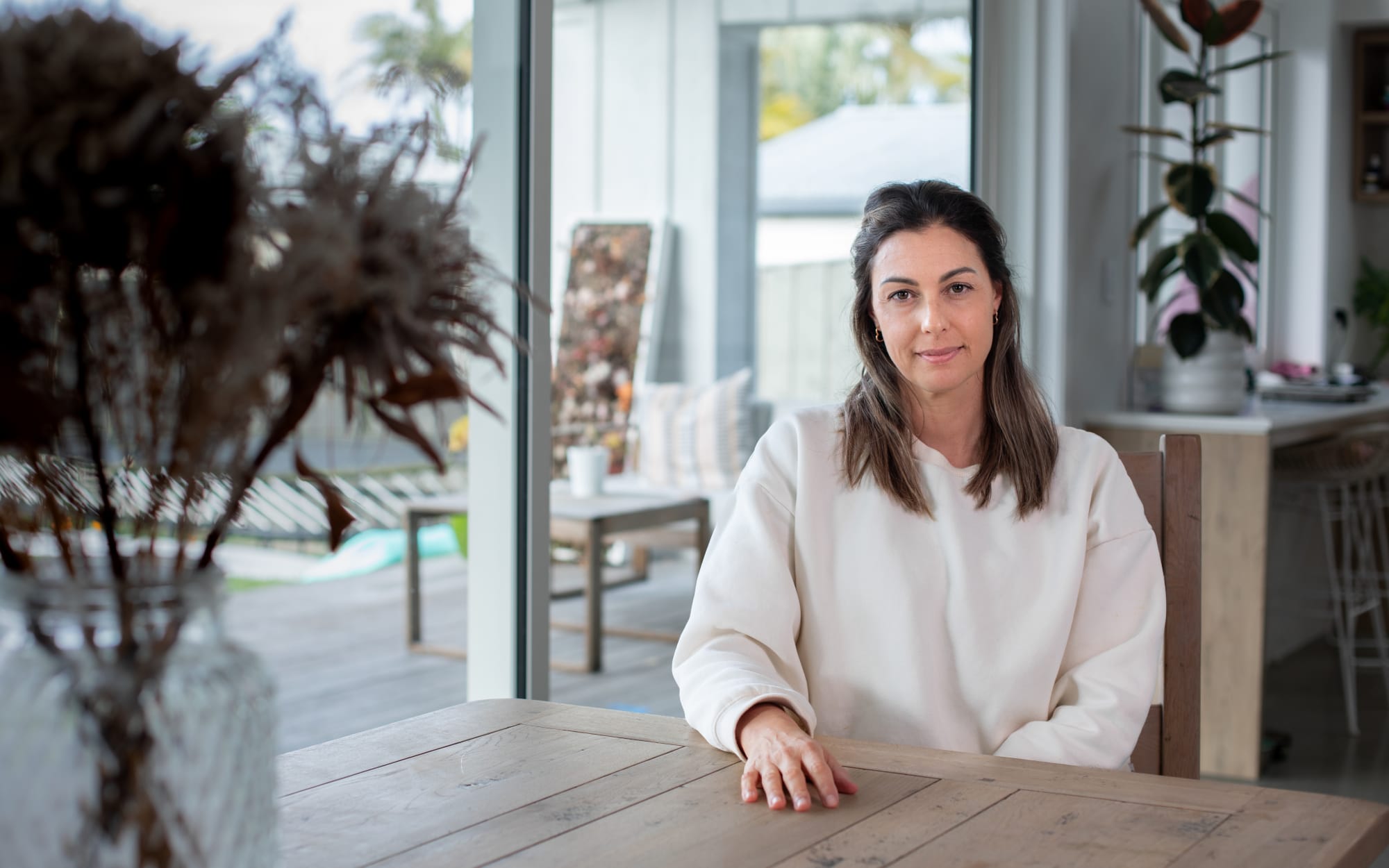
Eboni Ellison Photo: RNZ / Cole Eastham-Farrelly
Ellison’s story is not uncommon, says Emma Jones, the front person for the local charity Clear The Air, which was set up to give the community a voice on the issue. Jones began the group after moving to the Mount and growing concerned about her children’s health.
She never imagined herself as the public face of the issue, she says, and at times she too has had to take time out. She knows too well, she says, how exhausting it is to call that hotline over and over and to feel like no one is listening.
“Even if they do find something from an investigation, the industries are usually only served an abatement notice,” she says. “That’s the equivalent of a slap on the hand.”
The council gets around 500 calls to the hotline a year about the air quality problem. It is a difficult area to investigate, they say, because verifying odours is an immensely challenging task. Smells often disperse quickly depending on the strength and direction of the wind. Despite that, the council encourages the public to keep calling, saying it has taken enforcement action from complaints as recently as this year.
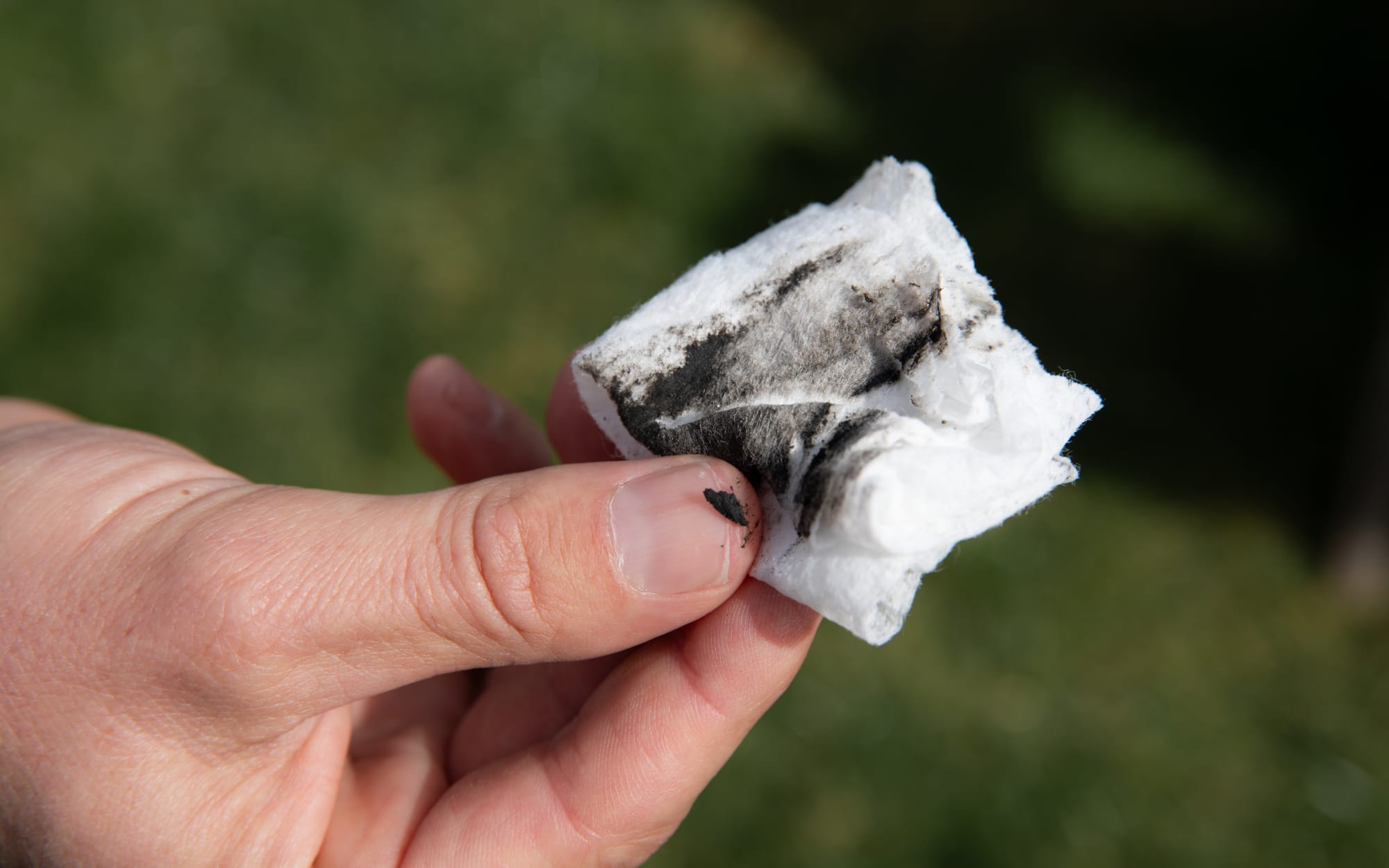
The result of a wipe along the window frame at Sven Hodkinson's home. Photo: RNZ / Cole Eastham-Farrelly
Ideally, advocates say, the council would find a new way to regulate that doesn’t rely on complaints or spikes in pollution. Jones, Whareroa, and Toi Te Ora’s Jim Miller, have repeatedly tried to make the point that simply measuring and prosecuting companies for exceeding the limits occasionally is not enough - it’s the constant, cumulative effect that does the long-term harm.
“The average background air pollution level, where you live - particularly where you live - does have an impact on your health, and it's a direct impact,” Miller says. “And it’s the responsibility of councils to make sure that’s at a safe level.”
The BOPRC’s website calls the pollution problem a situation “decades in the making,” but it says “human health will always come first”. When asked how its current approach is protecting human health, the General Manager of Regulatory Services, Reuben Fraser, says the pollution is a “complex situation” that can’t be fixed overnight.
Fraser says some of the data in the health report is from 2019, and air quality has improved since then. In 2020, there were 19 breaches of the limits of particulate matter, and so far this year there have been two. The improvements by industry came after a council-led audit programme, Fraser says.
“It’s important we recognise these efforts as this does make a difference and has contributed to overall air quality improvements,” Fraser says. The council is currently processing numerous air discharge consents in the area, and will be able to use stricter air quality rules when assessing those, he says.
Part of the problem for the council, however, is that the air quality standards it follows are set at central government level, by the Ministry for the Environment. Those standards are lower than those set by the WHO, but so far advocates have had no luck in getting the government to increase minimum standards in Aotearoa.

There are a number of resource consents being considered for industry continuing in the area. Photo: RNZ / Cole Eastham-Farrelly
The limits of the law
In 2020, Whareroa called for heavy industry to leave Mt Maunganui. Clear The Air backed that call, saying it would make more sense for industry to move to a purpose-built area, away from houses, and to use the industrial zone for residential use instead. Both groups emphasised they didn’t want to shut down the factories, they just didn’t want them operating next door.
In response, the Tauranga City Council (TCC), which is responsible for how the land is zoned, promised to seek legal advice on its options. After three years, it reported back, saying there was “no feasible pathway to move heavy industry”. It couldn’t force industry out, because they had “existing use rights”, which were protected under the Resource Management Act. The best councils could do was use resource consent processes for individual businesses as they came up for renewal to make changes, or make zoning rules that could potentially restrain future, but not, current activities.
“But what about our existing use rights?” Ngātuere says. “It would be different if industries were there first but they weren't.” The marae was there first, he says, and the schools were built in the 1950s.
The TCC says it now plans to explore future options with a Mount Maunganui Industrial Area study, as part of its current planning process. The study is due back later this year, but a council document says it could attempt a voluntary accord with business to introduce measures like landscaping, buffers, or the introduction of light industrial areas to support “progressive change.”
With the councils’ hands seemingly tied, some of the community focus has shifted back to industry itself.
“We would like industry leaders and the people on those company boards to take personal responsibility for what happens in their industries,” Jones says. “We want them to be accountable for the harm they’re causing to the community.”
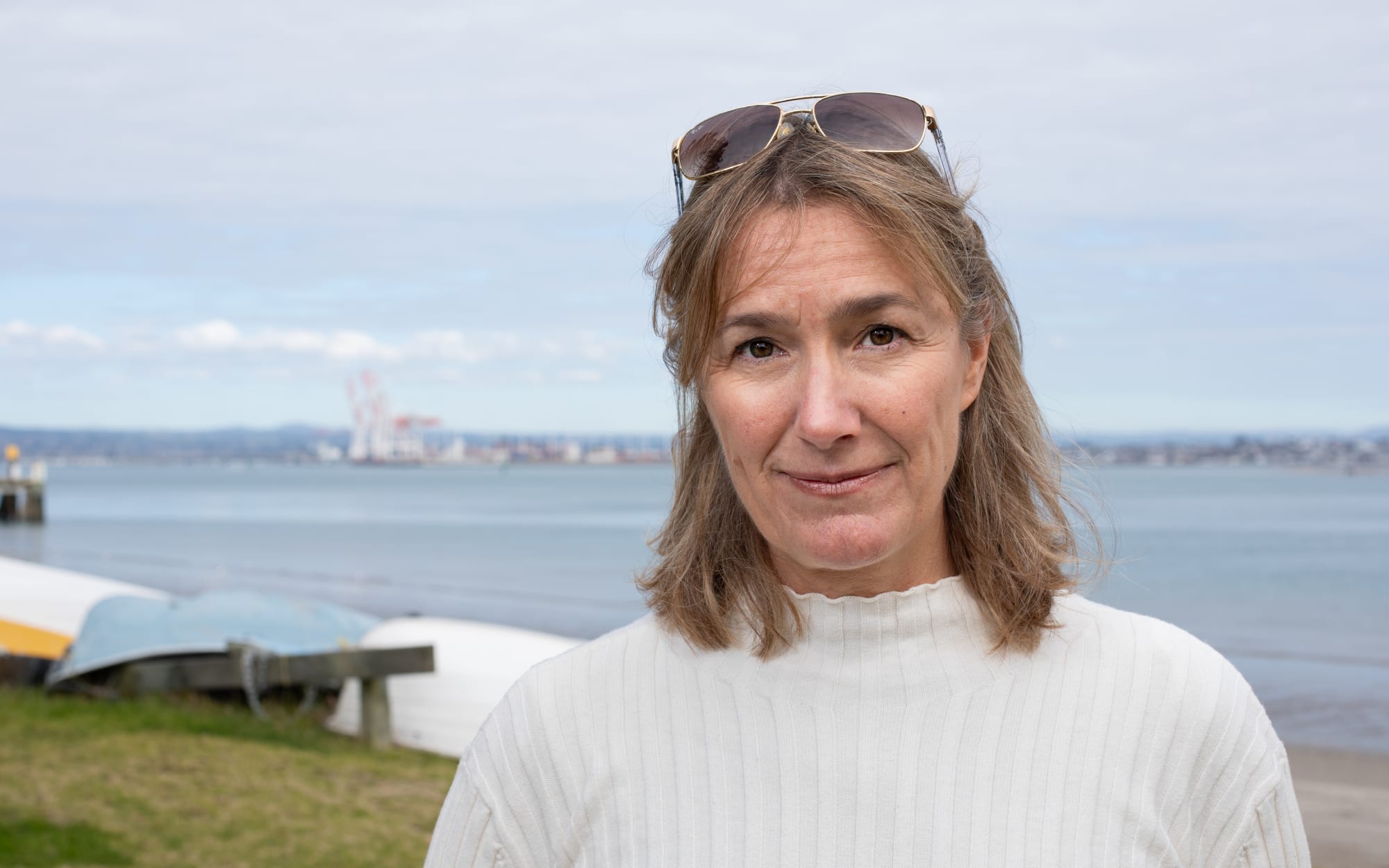
Emma Jones Photo: RNZ / Cole Eastham-Farrelly
Whether the industries will take further ownership is unclear. Some businesses have worked to improve their air emissions.
The local economic development agency, Priority One, says businesses are aware of the issues and want to improve. Chief executive Nigel Tutt says many have implemented initiatives to reduce their environmental impacts and risks.
“It’s critical that the Mount Industrial Area has a healthy co-existence with adjacent communities and the wider city, and businesses within the area continue to commit to minimising their environmental impact.”
Ballance Agri-Nurtrients says it is playing its part in council-led efforts to make the airshed “no longer classified as polluted” within 10 years. It has spent heavily on modernising its site, says Shane Dufaur, of Ballance.
“Ballance is committed to maintaining a fact-based position. We monitor air quality as it comes into and exits our site via a number of monitors that take into account prevailing wind and wind gusts,” Dufaur says.
But a number of the companies responsible do not accept they are contributing to a chronic air pollution problem.
In 2018, several of the companies fought against stricter air pollution laws when the council wrote its Regional Air Plan. This led to an Environment Court case that is still ongoing between one company, J Swap contracting, and the council over whether the dust from importing bulk solids, like stockfood, should have to be controlled by resource consent.
In 2020, Lawter, a global pine chemical company, told One News that the odour caused by its resin factory, “is not harmful and there’s no factual evidence to say it’s causing harm.”
In February, Priority One did a survey of industries in the airshed. It found 55 percent believed improving environmental outcomes was important to them, and 60 percent did not have an environmental policy or dedicated programme.
When asked about moving to a more suitable location, most businesses said they did not want to move, because their current location provides easy access to the port or major through roads - which is why they chose to set up there in the first place. Ballance, says Dufaur, has no plans to move.
Priority One itself has also been accused of minimising the problem. At an Air Quality Working Party meeting earlier this year it said that the “perception is probably worse than reality” for pollution in the industrial zone. Toi Te Ora immediately pushed back against that characterisation saying: “Degraded air quality impacts on human health. This is a fact."
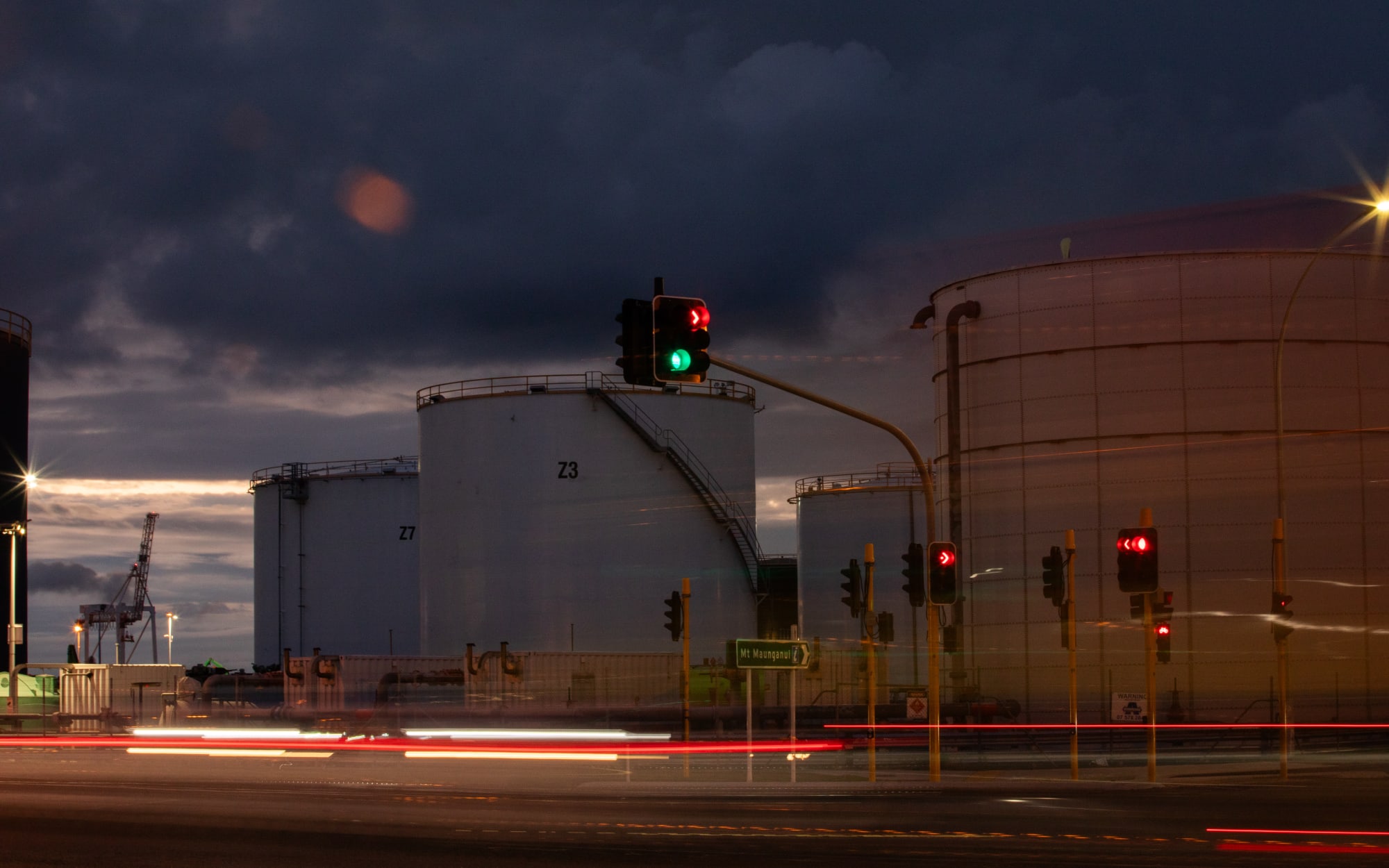
Generic shots of industry in the Mount Maunganui area Photo: RNZ / Cole Eastham-Farrelly
Industry’s future plans
The Mt Maunganui community has started to push back in other ways, too. Air quality concerns have been raised at multiple recent public meetings, where the councils and the Tauranga City commissioners repeatedly tell frustrated residents the issue is “complex”, and there is little they can do.
Residents are speaking out about the issue on social media. They’re also using the public process to make their voices heard.
Currently, seven companies are applying to renew their resource consents to discharge contaminants to air. Two of those were publicly notified - both from asphalt manufacturers.
Allied Asphalt wants a 35-year consent to continue to manufacture bitumen. It will build a new plant, with higher capacity. It says the new plant will see “significantly lower” odour emissions, and less pollution overall.
Higgins wants 10 years to keep polluting at the same rate while it investigates a possible new site for a new plant. In its application, it argues that the effects of any odours or chemical emissions from the plant were considered “less than minor”, and said the operation of the asphalt plant positively contributed to the local economy.
Despite minimal publicity about the consents from the council, both applications received dozens of submissions from the public, who pointed out that each company had previously faced enforcement action for breaching its consent; or that they were some of the worst contributors to the frequent nasty smells. Higgins had also previously asked for 10 years to find a new site, submitters said, and there was no evidence it had made any progress. (In its application, Higgins said it “invested considerable time and resources” into investigating an alternative site. While that site wasn’t currently feasible, it might be in the future.)
The bulk of the submitters opposed the consents, including Omanu School and Arataki Primary, and several businesses located adjacent to the plants. One car company complained its workers suffered headaches, sore eyes and feeling nauseous. Workers at another nearby company wore respirators due to their concerns about their health.
The most submissions came from parents anxious about their children.
“When the plant is operating and the wind is blowing towards my home I can’t sit outside or have any windows open and I am too worried to let my children play outside,” wrote one mother.

Mount Maunganui beach is a beloved Kiwi coastline. Photo: RNZ / Cole Eastham-Farrelly
Andrew Dawson, a father to a four and a six-year-old, said he had been prompted to submit out of a feeling of duty.
“I want [my children] to grow up in a Mt Maunganui that is healthy and clean. I don’t want to look back in 20 years and wish I had done more to protect them.”
A hearing to decide Higgins’ consent will be held later this year. Allied has elected to skip the council process and go straight to the Environment Court. That hearing will most likely be in 2024, with a decision even further away.
“The length of time these things take and the process does make it more difficult for your average member of the public - who’s got a busy life and other things going on - to stay the course,” Miller says. “That’s why it’s quite important that we make it our business to be involved in the process.”
Whareroa will be at the hearing, and so will Clear The Air. But many of the submitters said they didn’t have the time to participate. Others were considering simply moving away from Mt Maunganui because of the impact on both their physical and mental health.
Hodkinson is one of those. He had plans to build an extension on his house, but after this year has been left wondering if it will be worth it.
“I love this location. I was brought up here, I want my family to be brought up here as well,” he says. “There would be no doubt in my mind to stay here if we had clean air. But I feel like… is this the best place for us to live, when we’ve got pollutants in the air all the time?”
